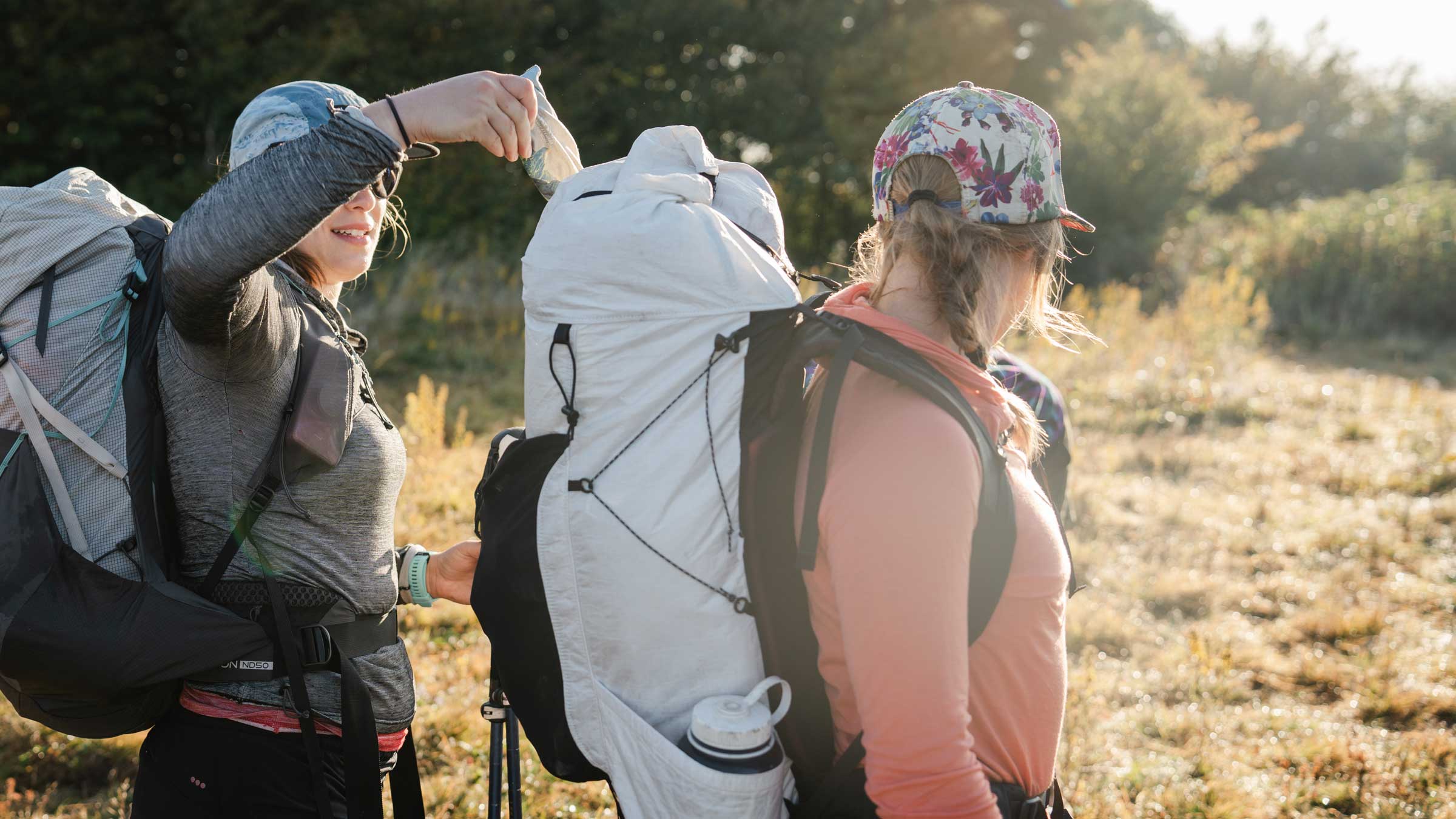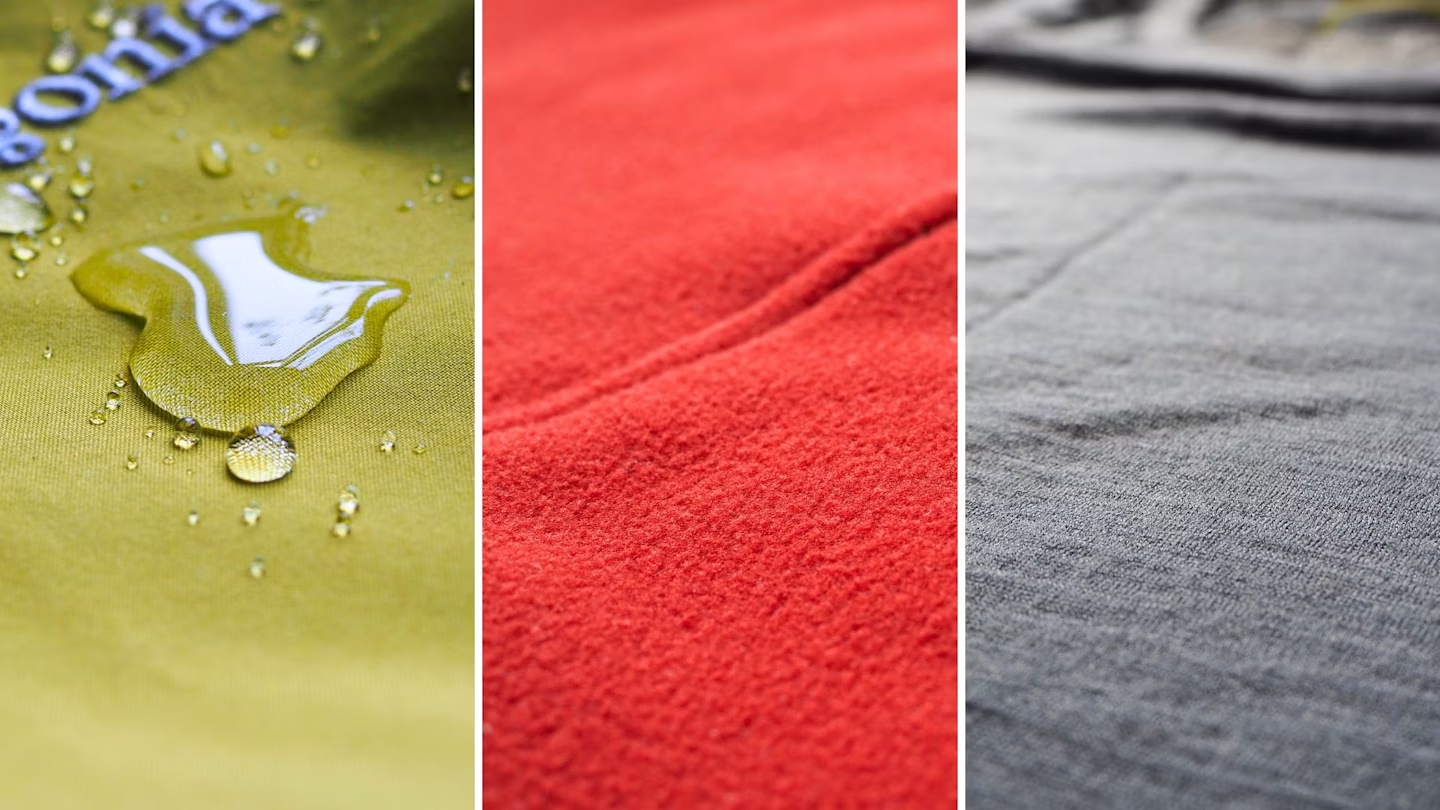Introduction
Venturing into the wild isn’t just about choosing the right trail; it’s about choosing the right gear. Whether you’re gearing up for a high‑alpine trek, a weekend in a remote forest, or a minimalist overnight camp, the question remains the same: Is your gear really built for the outdoors? In this comprehensive guide, we’ll break down what “built for the outdoors” truly means, how to identify gear designed to perform — not just look good — and how to match your kit to the rigours of nature. Expect a blend of storytelling, technical explanation, practical checklists and a dash of humour — because surviving the wilderness doesn’t have to feel like a chore.
1. Defining “Built for the Outdoors”
1.1 Robustness vs. Aesthetics
When people say “outdoor gear,” the mental image often is sleek, colourful, ready‑for‑Instagram. But looks alone don’t cut it. True outdoor gear prioritises function first: materials that withstand abrasion, hardware (zippers, buckles) that won’t fail when you’re half‑suspended on a rock, seams that keep the rain out. In contrast, fashion‑led “outdoor‑style” items often compromise on durability and weather protection in favour of appearance.
1.2 Purpose‑Specific Design
A sleeping bag built for arctic overnight stays is very different from one intended for summertime canoe trips. “Built for the outdoors” implies that the design and materials are matched to environmental stresses: temperature variation, moisture, abrasion, pack weight, ease of repair. It means the manufacturer has thought “This will get used in rain, wind or sun, by someone who can’t afford kit failure.”
1.3 Performance Under Environment
In the wild, unpredictable conditions are the norm. So truly outdoor‑built gear must perform under:
- Temperature extremes (hot deserts, snowfields)
- Moisture intrusion (rain, snow, river splashes)
- Mechanical stress (packs dragged over rocks, tent poles flexing in wind)
- Extended usage (multi‑day trips where maintenance is minimal)
If your gear meets these challenges without breaking, it’s genuinely built for the outdoors.
2. The Materials That Matter
2.1 Fabrics & Textiles
Synthetic vs. natural:
- Synthetic fabrics (nylon, polyester, aramid) dominate because they are lighter, dry faster and resist rot — key for outdoor gear.
- Natural fabrics (cotton, wool) have place — wool in base layers for cold retention, cotton is comfortable — but cotton in a shell jacket? That’s a design fault for the outdoors, as cotton retains water and loses insulation when wet.
Weave and denier:
Fabric strength often correlates to denier (thickness of fibres) and weave tightness. A tent with 210 T (thread count) rip‑stop nylon is more durable than one with 75 T plain weave. A jacket with 70‑denier nylon will last longer than one with 30‑denier.
Coatings and membranes:
- A waterproof breathable jacket uses membranes (such as GORE‑TEX®, eVent®) or coatings (DWR – durable water‑repellent) to shed water and allow sweat vapour to escape.
- Gear that’s “water‑resistant” but not sealed will fail quickly in persistent rain.
2.2 Hardware & Components
In outdoor gear, the small things matter:
- Zippers: YKK and other high‑end zippers are dependable. Cheap zippers can seize or break under load.
- Buckles & clips: Check for impact resistance (heat/cold), flexibility, and detachment under load.
- Seams: Look for taped or welded seams in waterproof gear. Unsealed seams = leak entry.
- Packs & frames: The frame design, padding, strap adjustability, and material quality need to match the load and terrain.
2.3 Insulation & Fill
For cold‑weather gear:
- Down: Best warmth‑to‑weight ratio, excellent compressibility — but loses loft when wet unless treated (hydrophobic down).
- Synthetic insulation: Less efficient than down in calm dry conditions, but retains loft when wet, dries faster, and is often cheaper.
The right insulation depends on climate, expected wetness and how much weight/pack‑space you can carry.
3. Matching Gear to Environment
Cannot overstate: one size does not fit all. Your alpine summit gear differs radically from the gear for a desert canyon. Here’s a breakdown.
3.1 Cold, Wet Mountains
- Expect snow, rain, wind, –10 °C or lower.
- Gear must prioritise weatherproofing, insulation, wind resistance, mobility under load.
- Think: Hard‑shell jacket with taped seams, insulated gloves, layering system, mountaineering boots, avalanche safety kit.
3.2 Temperate Forest / Multi‑Day Backpacking
- Conditions are moderate, but you might still face rain, mud and heat variation.
- Gear priority: durability, breathability, packability.
- Think: Waterproof breathable jacket, mid‑weight sleeping bag (10–20 °C rating), a 50–70 L pack with hip belt and good frame.
3.3 Desert or Arid Terrain
- Key challenges: heat, dryness, sand, UV exposure, large diurnal temperature swings (hot day, cold night).
- Gear priority: ventilation, sun protection, dust/sand resistance, water capacity.
- Think: Lightweight shell with big vents, breathable boots, sleeping quilt with decent cold rating, hydration system.
3.4 Urban “Outdoor” / Weekend Adventures
- You might never see a thunderstorm, but you’ll still want gear that performs.
- Gear priority: versatility, comfort, style meeting substance.
- But: If you treat your urban‑portable gear as full‑on wilderness gear, you risk performance gaps.

4. Main Categories: Checklist & Considerations
Here we break down the major gear categories and what to look for.
4.1 Outerwear (Jackets & Pants)
- Waterproof rating / breathability: Higher waterproof rating (e.g. 20,000 mm) and higher breathability (RET < 6) indicate serious performance.
- Seam construction: Fully taped seams are essential for true waterproof performance.
- Hood design: Helmet‑compatible for alpine use; an adjustable brim to keep rain/snow off.
- Ventilation: Under‐arm zippers (“pit zips”), side zips on pants.
- Durable fabrics: Higher denier or reinforced areas (elbows, knees).
- Fit & mobility: Slim enough for layering, but roomy enough to move.
4.2 Backpacks
- Capacity: Match volume to trip length and environment. Multi‑day mountaineering pack (70–90 L) vs daypack (20–30 L).
- Frame & suspension: Internal or external; must distribute weight to hips.
- Material: Denier count, rip‑stop fabrics, robust webbing.
- Access & organisation: Top lid, front panel, side pockets, hydration compatibility.
- Attachment points: For ice axes, trekking poles, crampons, helmet.
- Raincover or waterproof main compartment: essential in wet environments.
4.3 Tents & Shelters
- Three‑season vs four‑season: Four‑season means designed for snow and wind.
- Pole structure & design: Geodesic or semi‑geodesic for high winds; simple dome or tunnel for general camping.
- Fabric & fly: No‑see‑um mesh, double‑wall configuration, good D‑value of materials.
- Ventilation & condensation control: Roof vents, mesh panels.
- Ease of setup: Especially when darkness or weather closes in.
4.4 Sleep System (Sleeping Bags / Quilts / Pads)
- Temperature rating: Match to lowest expected temperature minus safety margin (~10‑20%).
- Insulation type & weight: Down vs synthetic as above.
- Shape & fit: Mummy shape for warmth‑to‑weight, quilt for ultralight and warmer conditions.
- Pad R‑value / insulation: A sleeping pad often matters more than the bag in cold ground conditions.
- Compression & pack size: Especially for lightweight setups.
4.5 Footwear & Gaiters
- Terrain match: Trail runners for light hikes, stiff mountaineering boots for rock/ice.
- Waterproof/breathable membranes: Gore‑Tex, etc, for wet terrain.
- Outsole & tread: Deep lugs for mud, sticky rubber for rocks, shallow for hard pack.
- Support & fit: Especially under load; heel lock, wide toe box, good ankle support when needed.
- Gaiters: Add protection against snow, dust, scree.
4.6 Navigation & Safety Tools
- Map & compass: Divide digital reliance; batteries die.
- GPS device or smartphone backup: Rugged, water‑resistant, replaceable battery.
- Headlamp: Rated for at least 300 lumens in remote areas, with red mode to preserve night vision.
- Repair kit & multi‑tool: Duct tape, zip ties, cordage, spare buckle, sewing kit.
- First‑aid kit: Tailored for remote, multi‑day use.
4.7 Cooking & Hydration
- Stove type: Canister, liquid fuel, solid fuel — depending on altitude/temperature.
- Cookware: Durable, packable, heat‑spread.
- Hydration system: Minimum 2–3 L capacity for single day hikes; filtration system for source water in remote areas.
- Water bottles vs bags: Wide‑mouth bottles easier to clean; hydration reservoirs faster for sipping.
- Fuel & store planning: Cold affects fuel efficiency; high altitude reduces burn efficiency.
5. Manufacturing & Sustainability Considerations
In today’s market, how a piece of gear is made matters almost as much as what it does.
5.1 Responsible Sourcing
- Many outdoor brands now disclose fabric sourcing, worker welfare, chemical management (e.g., PFCs in waterproof DWR treatments).
- “Built for the outdoors” increasingly means built with the outdoors in mind: minimal environmental impact, durable to reduce waste, repairable.
5.2 Repairability & Longevity
- A jacket with replaceable zipper and patches will last far longer than one with bonded seams that fail at the first abrasive contact.
- Some brands offer lifetime warranties or repair‑pal ready parts; gear that doesn’t value repair is less “outdoors‑ready”.
5.3 Lifecycle & End‑of‑Life
- Consider: Can the item be recycled? If it arrives worn out in one season, that’s neither sustainable nor well‑engineered.
- Durable gear is cost effective over time, and less wasteful. That counts as built for outdoors — both functionally and ethically.
6. Testing Your Outdoor‑Readiness
How do you test if your gear truly works outdoors? Here are practical steps:
6.1 Field Simulation
Before you head into remote terrain:
- Take everything on a shorter trip in conditions somewhat harsher than you expect.
- Test your pack loaded: Does it fit? Are straps cutting in? Frame flexing?
- Inflate your sleeping pad beneath your bag on cold ground; does your back get cold?
- Run your shell jacket in heavy rainfall or jet lag wind: Are you dry inside?
- Wear your boots in varied terrain: How’s the comfort and fit?
6.2 Stress & Fail‑Point Examination
- Visually inspect seams, zippers, fabric for wear after each use.
- Flex poles, joints, buckles; bend them aggressively in controlled settings to find weak points.
- For gear used in cold: test condensation inside the insulation, and loft when wet (for down gear).
- For hydration: fill reservoir, shake vigorously; does any leakage occur? Test filtration system with known dirty water.

6.3 Match Usage to Design
- Align your gear’s rated specification (temperature, waterproofness, load capacity) with your expected conditions (season, terrain, duration).
- For example, if your sleeping bag is rated to 32°F (0 °C) but you’ll be at 15 °F (‑9 °C) for two nights — you’re under‑geared.
- If your pack is rated for 35 L but you’re packing for a 5‑day mountain trip with heavy load — mismatch.
7. Common Mistakes & How to Avoid Them
7.1 Over‑luxury in Minor Conditions
Having a high‑end ultralight shelter for a backyard camp? Possibly overkill. Conversely, neglecting durability in real wild terrain is under‑gearing.
7.2 Underestimating Weather
Thinking “It won’t rain” is a gamble. Weather changes fast. Many gear failures come from ignoring moisture management or wind resistance.
7.3 Buying for Style, Not Substance
Outdoor‑style jackets look good, but often lack taped seams, decent waterproofing, or rugged fabric. They might serve urban rain, but won’t keep you dry in a mountain storm.
7.4 Ignoring Fit & Ergonomics
A high‑tech shell that doesn’t fit correctly will restrict movement and cause discomfort, effectively limiting performance. Gear must fit you and your activity.
7.5 Neglecting Maintenance
Even the best gear requires care: washing DWR coatings and re‑impermeabilising shells, cleaning sleeping pad valves, lubricating zippers. Gear not maintained won’t last or perform.
8. The Role of Innovation & Industry Trends
8.1 Lightweight & Ultralight Movement
Advancements in materials allow for dramatically reduced weight and bulk without sacrificing function — e.g., nano‑fibres, ultra‑thin membranes, composite pack frames. But with ultralight comes potential sacrifice in durability. “Built for the outdoors” means finding the balance.
8.2 Smart Fabrics & Adaptive Tech
- Fabrics now adapt: moisture wicking, temperature adjusting, integrated solar charging.
- Some tents use fabric structures that adjust shape in wind, or polymers that self‑heal minor abrasions.
These innovations raise the bar, but also raise questions of repairability and field reliability.
8.3 Sustainability & Circular Economy
Brands increasingly adopt recycled fabrics, refillable insulation, modular designs — all pushing gear toward “end‑of‑life” consciousness. Built for the outdoors now means built with the outdoors in mind.
8.4 Direct‑to‑Consumer Models & Customisation
Many companies now allow you to customise fit, load capacity, colour and accessories. That means outdoor‑built gear is more tailored to you — better fit = less fatigue, better performance in the wild.
9. Making Smart Gear Choices
9.1 Know Your Activity
Is it:
- Technical mountaineering?
- Multi‑day trekking?
- Ultralight thru‑hiking?
- Casual weekend camping?
Pin this down first. Your gear needs to match purpose.
9.2 Prioritise Features That Matter
Depending on the terrain and climate:
- If cold/wet: waterproof, insulated, durable.
- If hot/dry: ventilation, sun protection, debris defence.
- If load heavy: pack frame, strap adjustability, hip belt.
- If minimal: weight and pack size.
9.3 Budget Wisely—Value Over Brand
Top brands can cost more, but what you’re buying is performance and reliability. If you buy cheap gear, expect to replace it sooner. A discount shell that leaks is false economy.
9.4 Fit & Try Before You Buy
Go to a store if possible. Load the pack, put on the jacket with layering, walk, bend. Comfort + interface between gear and body matters as much as the specs.
9.5 Inspect Specs & Reviews
Look beyond marketing:
- Waterproof rating vs actual waterproofness.
- Independent lab or user tests.
- Field reviews under extreme conditions.
- Warranty and repair policy.
9.6 Think Long Term
Choose gear you’ll keep for years. Look for items that:
- Have spare parts available.
- Are repairable.
- Offer upgrade paths.
Longevity equals sustainability and better value.
10. Real‑World Case Studies
10.1 Failed Gear in the Field
On a remote winter climb, a colleague’s jacket’s sealed seams failed under heavy reservoir snow dump. Result: wet insulation, cold shock. The jacket looked premium but used lower‑grade seam tape. The lesson: aesthetics fooled the user, but performance bit back.
10.2 Gear that Withstood the Wild
A 10‑day trek across a Belgian forest range tested a pack with an internal aluminium frame, high‑denier fabric, and YKK zippers. Despite heavy rains, muddy trails and 35 kg load, the pack held exactly as designed — no hardware failure, no seam separation. That is gear built for outdoors.
10.3 Mis‑Match Example
Someone used an ultralight summer tent (rated to 5 °C, minimal poles) for a spring alpine camp expecting snow. At 2 a.m. a gust collapsed the tent, the interior froze and soggy sleeping bag soaked up condensation. The gear was built for summer outings, not alpine storms. Matching environment to spec matters immensely.
11. Maintenance & Care: Extending Lifespan
11.1 Cleaning & Storage
- Wash shell jackets with specialist tech‑fabric detergent; reapply DWR treatment every few seasons.
- Store sleeping bags loosely in cotton sacks (not compressed) to preserve loft.
- Rinse boots after muddy trails; dry naturally but avoid direct heat.
- Moisture and dirt degrade materials faster — a clean piece lasts longer.
11.2 Repair & Spares
- Carry patch kits, spare buckles, zipper sliders.
- Many packs have “repair logs” online; even do‑it‑yourself patching can keep gear alive.
- Replace worn parts rather than discarding the whole item.
11.3 Condition Monitoring
- After each major outing check for: frayed seams, fabric wear, zipper stiffness, insulation clumping.
- Document failures; if gear didn’t perform, note why — helps guide your next purchase.
12. Summary: The Ultimate Gear Checklist
At this stage you should be able to look at any piece of equipment and ask:
- Does this match my environment and activity?
- Are the materials, hardware and build quality appropriate for real outdoor stress?
- Has this been field‑tested or merely marketed?
- Can I maintain and repair this piece?
- Will this gear last multiple seasons (not just a few outings)?
If you can answer “yes” to most of these, your gear is likely built for the outdoors.
Conclusion
So, is your gear really built for the outdoors? It’s a straightforward question, but the answer demands a little homework. The wilderness doesn’t care how trendy or visually flashy your jacket is; it only cares whether you’re dry, warm, and protected when the wind picks up, the rain pours and the trail demands your full attention. Real outdoor gear embodies function over style, resilience over novelty, fit over flash.
Next time you gear up, take a mental checklist: Purpose → Materials → Match to Environment → Maintenance. Choose gear that’s suited to your wilderness stage, built to face the elements, and backed by quality rather than hype. Because when you’re 20 miles from the trailhead and the sky opens up, gear built for the outdoors won’t just make the difference between comfort and discomfort — it will make the difference between enjoying your adventure or simply scrambling through it.
Pack smart. Choose wisely. Get outside.























